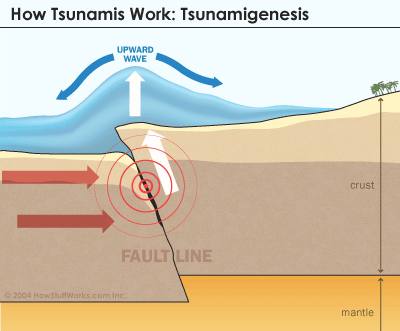
People, as a society, find it hard to learn from their mistakes. Since the tragic events caused by tsunamis we have not been able to shelter ourselves from them. But this doesn’t mean researchers are just hanging around – on the contrary. Many scientists are working and they are trying to understand the exact mechanism of how a tsunami is formed; this could mean saving lives and preventing environmental and structural damage.
They do this by making mini-tsunamis in Oregon. A tsunami is a series of waves created when a body of water, such as an ocean, is rapidly displaced. Earthquakes, mass movements above or below water, volcanic eruptions and other underwater explosions, landslides, large meteorite impacts and testing with nuclear weapons at sea all have the potential to generate a tsunami. The effects of a tsunami can range from unnoticeable to devastating.
Their focus is the incoming rush of water and they are ignoring the effect of the powerful forces that a tsunami wave can exert on the earth beneath when it draws back into the ocean.
“This was the first experiment of this kind and it will allow us to develop a realistic model to show us what really happens to the sand during a tsunami,” said Yin Lu “Julie” Young, an assistant professor of civil and environmental engineering at Princeton University’s School of Engineering and Applied Science.
Places like Hawaii lack buildings which are able to resist the force of a tsunami and that brings danger.
“This is absolutely necessary in a place like Waikiki because in the event of a tsunami there is no place to run,” she said. “It is too populated and the near-shore bathymetry is too flat. The building has to stay intact so that people can evacuate vertically.”.
Their interest is enhanced sediment transport and potential “liquefaction” of the soil, which occurs when a tsunami wave recedes.
They are trying to establish “performance-based tsunami engineering”. This means that they are searching for guidelines for building structures which are able to resist tsunamis. The problem is that there are a lot of variables in the dynamics of sand and water, according to Young. “Sediment transport during tsunamis hasn’t been studied well at all,” said Young. “We plan to use this research to create a benchmark test that everyone can use to compare their numerical predictions. Ultimately we want to come up with a design procedure that can give a sense of the risk and the reliability of a structure and its foundation.”. This should be a big step in shielding from this and reducing the damage from tsunami.









